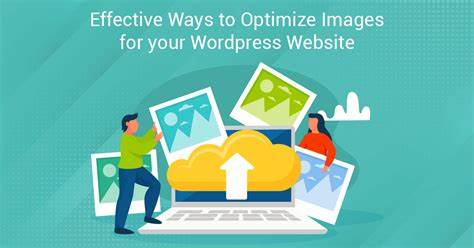Images are an essential part of any website, as they can enhance the visual appeal, convey information, and increase engagement. However, images can also slow down the loading speed of a website, which can affect the user experience, SEO ranking, and conversion rate. Therefore, it is important to optimize images for WordPress, which means reducing their file size without compromising their quality. Image optimization can improve the performance of a website, save bandwidth and storage space, and boost the overall user satisfaction.
There are different ways to optimize images for WordPress, but the most common ones are:
- Choosing the right image format: There are various image formats available, such as JPEG, PNG, GIF, SVG, and WebP. Each format has its own advantages and disadvantages in terms of quality, compression, and compatibility. For example, JPEG is a lossy format that can reduce the file size significantly but may cause some loss of quality. PNG is a lossless format that can preserve the quality but may result in larger file sizes. GIF is a format that can support animation but has limited colors. SVG is a vector format that can scale without losing quality but may not be suitable for complex images. WebP is a newer format that can offer both lossy and lossless compression and support animation and transparency but may not be supported by all browsers. Therefore, it is important to choose the right image format based on the type and purpose of the image.
- Resizing and cropping the image: Resizing and cropping the image can help reduce the file size by removing unnecessary pixels and dimensions. For example, if an image is displayed at 300×200 pixels on a website, there is no need to upload an image that is 1000×800 pixels. Resizing and cropping the image can be done using various tools, such as Photoshop, GIMP, or online image editors. However, it is important to maintain the aspect ratio of the image to avoid distortion and use high-quality settings to avoid pixelation.
- Compressing the image: Compressing the image can help reduce the file size by removing redundant data and optimizing the encoding. There are two types of compression: lossy and lossless. Lossy compression can reduce the file size significantly but may cause some loss of quality. Lossless compression can preserve the quality but may not reduce the file size as much. Compressing the image can be done using various tools, such as TinyPNG, Optimole, or online image compressors. However, it is important to balance the trade-off between quality and file size and use appropriate settings for different formats.
- Using a plugin: Using a plugin can help automate the process of optimizing images for WordPress. There are various plugins available, such as WP Smush, EWWW Image Optimizer, or ShortPixel Image Optimizer. These plugins can automatically resize, crop, compress, and convert images when they are uploaded or edited on WordPress. They can also optimize existing images in bulk or on demand. However, it is important to choose a reliable and compatible plugin that suits the needs and budget of the website.
Conclusion
Optimizing images for WordPress is a crucial step to improve the performance and user experience of a website. By choosing the right image format, resizing and cropping the image, compressing the image, and using a plugin, one can reduce the file size of images without compromising their quality. Image optimization can also benefit SEO ranking, conversion rate, bandwidth and storage space usage, and overall user satisfaction. Therefore, it is recommended to optimize images for WordPress using the best practices and tools available.
Subscribe to our email newsletter to get the latest posts delivered right to your email.

Comments